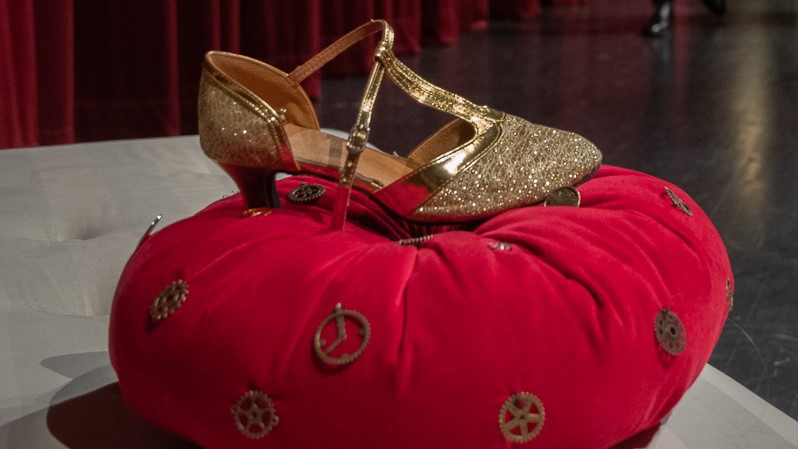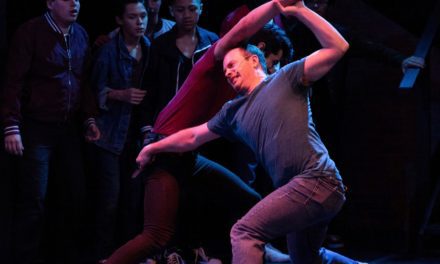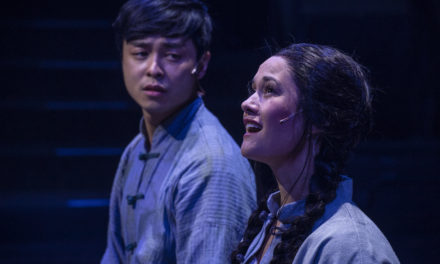EAGLE MOUNTAIN — On the western fringe of Utah County, Eagle Mountain Community Theatre has a production of Rodgers and Hammerstein‘s Cinderella that is unlike any other I have ever seen. With a steampunk aesthetic and a nearly bare stage, this production takes a lot of artistic risks. Not all of those risks worked, but there is still value in a show that gives amateur actors the chance to explore a classic script and score.
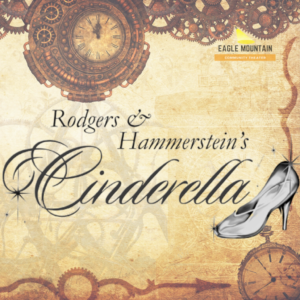
Show closes December 3, 2022.
Bucking the recent trend in which local companies have produced the updated 2013 version of the script, Eagle Mountain Community Theatre chose to produce the 1957 version of Cinderella originally written for television. Oscar Hammerstein’s script has its charms, and choosing a shorter, simpler version of this show was probably a wise move for a fledging theatre company.
Director Emma Faye gave a steampunk style to the show, and that was most apparent in the costumes designed by Brittani Harris and Joslyn Borup. The asymmetrical vests and jackets for the men, deep colors, and the corsets for women eschewed a traditional fairy tale look for the show. And the choice to have a pumpkin dirigible (created by Kelli and Greg Stevenson) carry Cinderella off to the ball was a surprise. A steampunk Cinderella is creative, undoubtedly. But the idea was distracting — especially in group scenes — and did not strengthen the play.
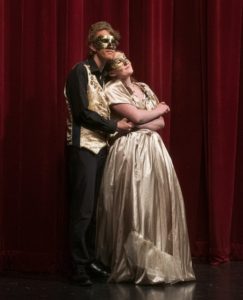
Marcus Johnson as Prince Christopher and Lindsey Brown as Cinderella. Photo by Chameleon PhotoStudio.
The directorial concept probably sapped energy and resources away from more vital aspects of the production, especially the set. Because the set was limited to printed images hanging on scaffolds, it was confusing when the fairy godmother was supposed to be outside of Cinderella’s house and there was nothing on stage forming a boundary between inside and outside. Likewise, there was no staircase for Cinderella to descend in order to enter the ballroom — even though her prince talked about seeing her enter that way.
Lindsey Brown played the title character beautifully. Brown gave a tender performance as the tired, burdened girl who dreams of something better. “In My Own Little Corner” was playful and showed how Cinderella used fantasy to escape from her dreary life. Brown was also impressive at painting a verbal picture of the ball in “When You’re Driving Through the Moonlight.” I was also pleased Brown soldiered on, overcoming a temperamental microphone that often made her sound muffled (and failed completely for the first 10 or 15 minutes of the third act). A performer who can give such a memorable performance under those conditions deserves plenty of applause.
There was a struggle, though, in creating chemistry between Cinderella and Prince Christopher (played by Marcus Johnson). I think most of this problem arises from decisions imposed on the actors, though. In the ball scene, the two wore masks — a decision that has sound logic behind it (because it would make it more believable that the prince does not recognize Cinderella until the slipper fits her foot). But the masks made it harder for the two to connect emotionally. Additionally, the physicality of romantic attraction during the ball was missing. Faye had the prince kiss Cinderella on the forehead (why not the lips?), and choreographer Daniel Atwell had the two dancing with far too much physical space between them. This is a love story. Show it!
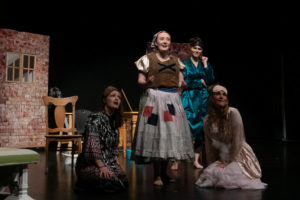
Left to right: Heather L. Brower as Joy, Lindsey Brown as Cinderella, Rochelle Rackliffe as the Stepmother, and Ashley Hamblin as Portia. Photo by Chameleon PhotoStudio.
The female supporting performers are the source of much of what works in this production. I greatly enjoyed the family dynamic among the Stepmother (played by Rochelle Rackliffe) and her daughters, Portia (played by Ashley Hamblin) and Joy (played by Heather L. Brower). The three stayed away from caricatures and instead played their characters as petty, jealous women. Hamblin and Brower were a riot in the “Stepsister’s Lament” because they were so uninhibited in their acting. Finally, as the Fairy Godmother, Chelsea Lynn Tramell has the most powerful voice in the cast and brings a smart sensibility to her role during “Impossible.”
Many other actors were struggling, though. Because one of the purposes of a review is to encourage improvement, I have some general tips for the actors that may help them in this production and in later shows that they perform in. First, when entering and exiting a scene, always have a clear idea of where your character is coming from or going to; a good performance starts and ends out of sight of the audience. Second, do not suddenly start singing in a musical. Instead, the transition from speaking to singing should be gradual, with the context and the script pushing the character to sing. Finally, stay focused on the action of the scene and do not distract from it. This advice applies to ensemble members and to actors with speaking roles.
As a cheerleader for the arts in Utah, I am glad that this little group is gaining a toehold for live theatre in Eagle Mountain. Cinderella is a good outlet for actors to develop new talents in the theatre. The company is not quite ready to succeed with grand artistic risks in its shows, but Eagle Mountain Community Theatre has the potential to eventually match other amateur groups’ ability to stage strong productions of some of Utah’s most beloved musicals.

